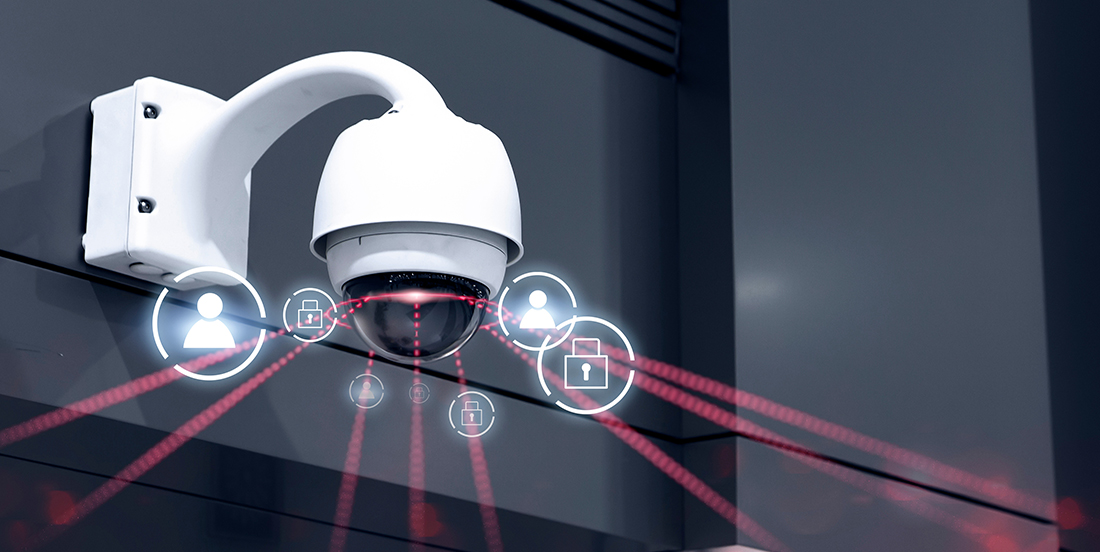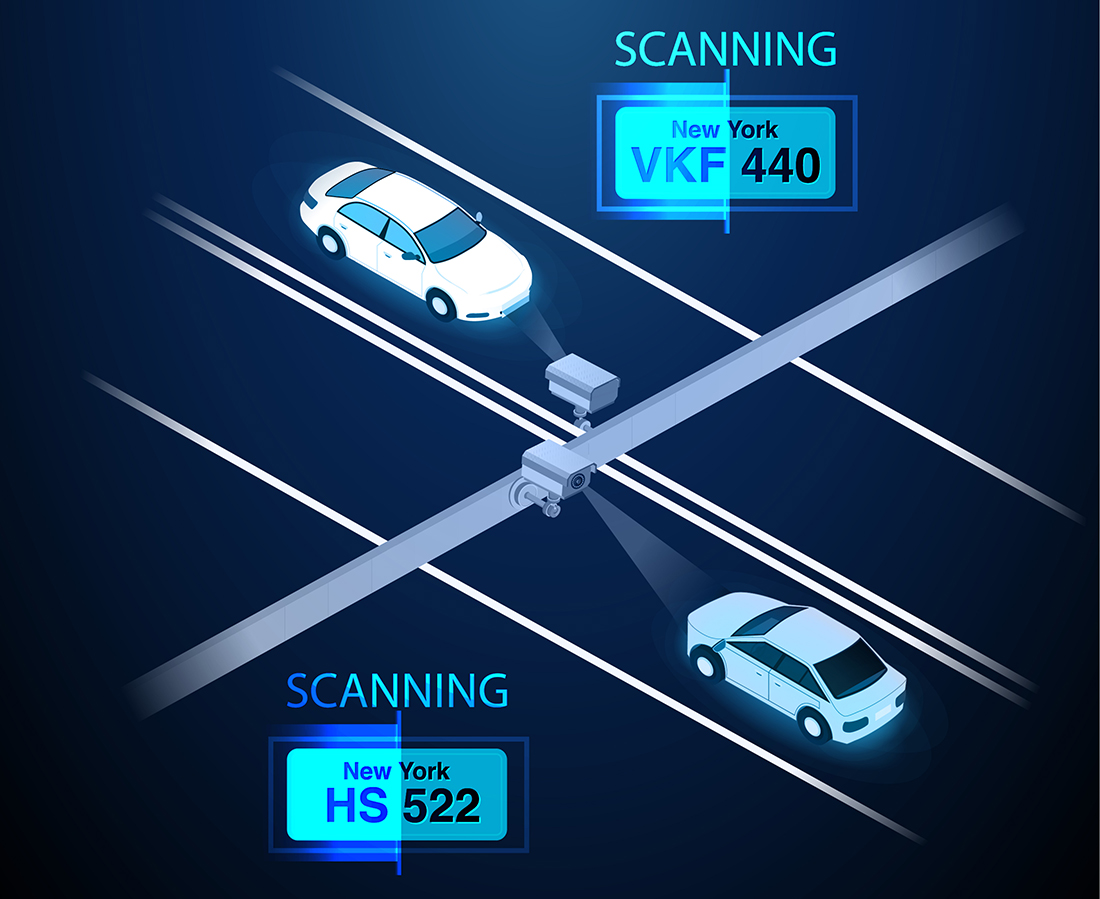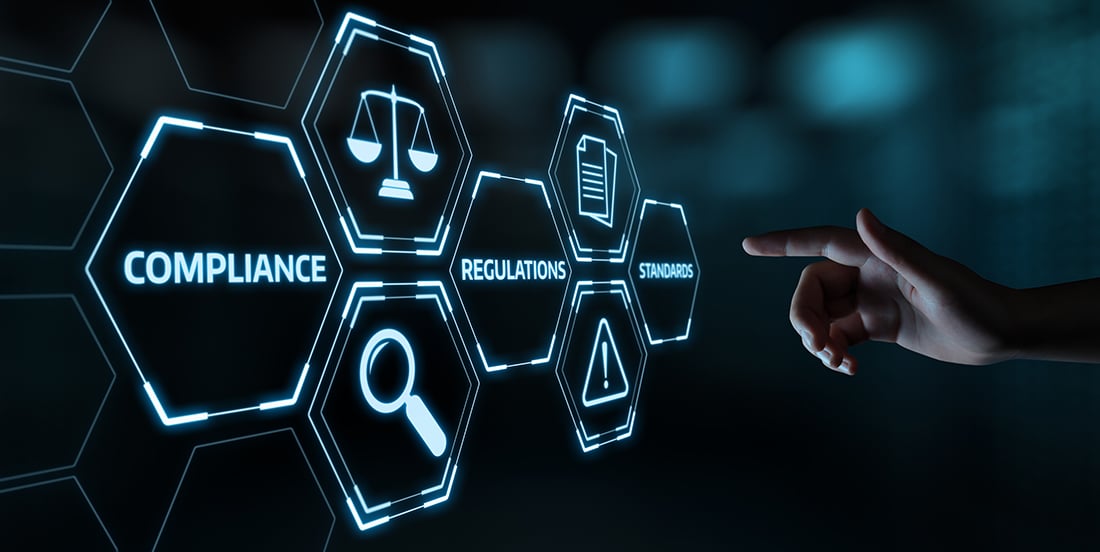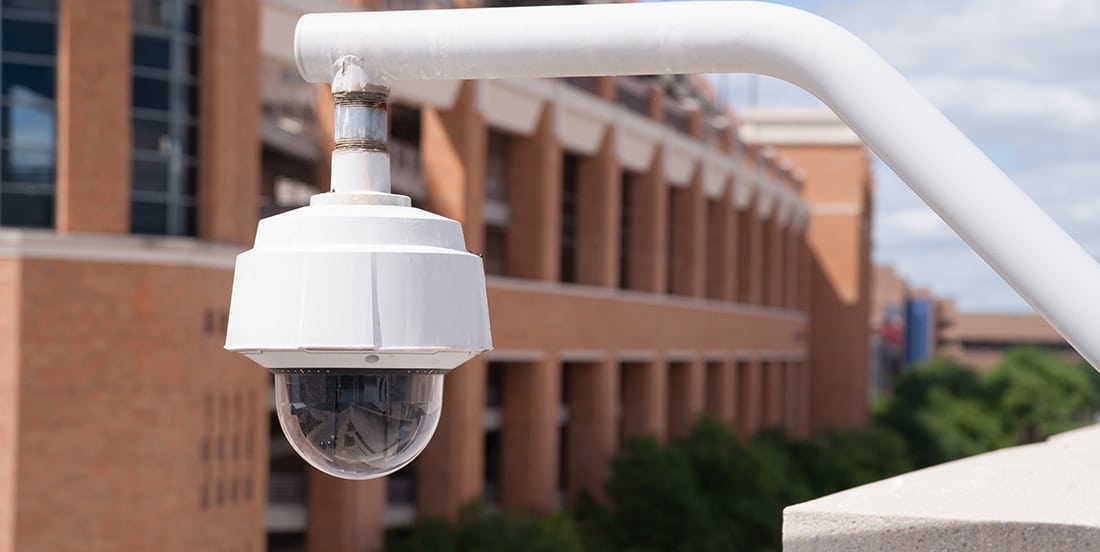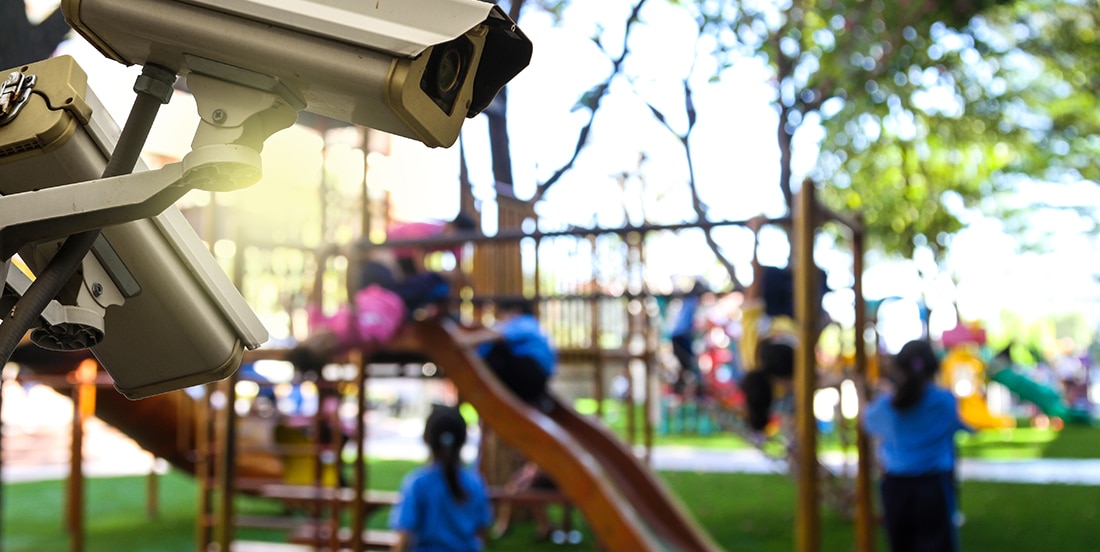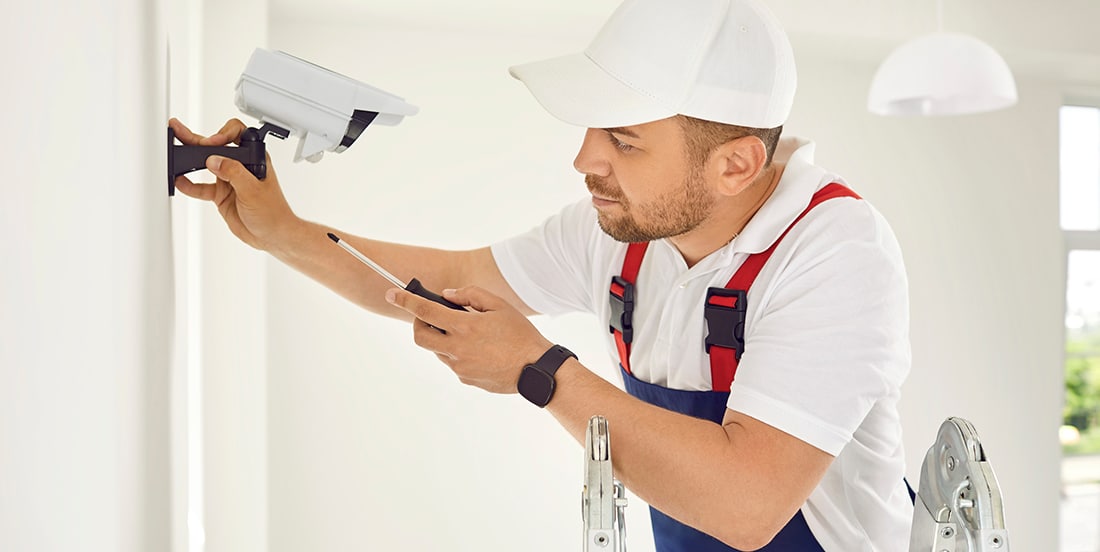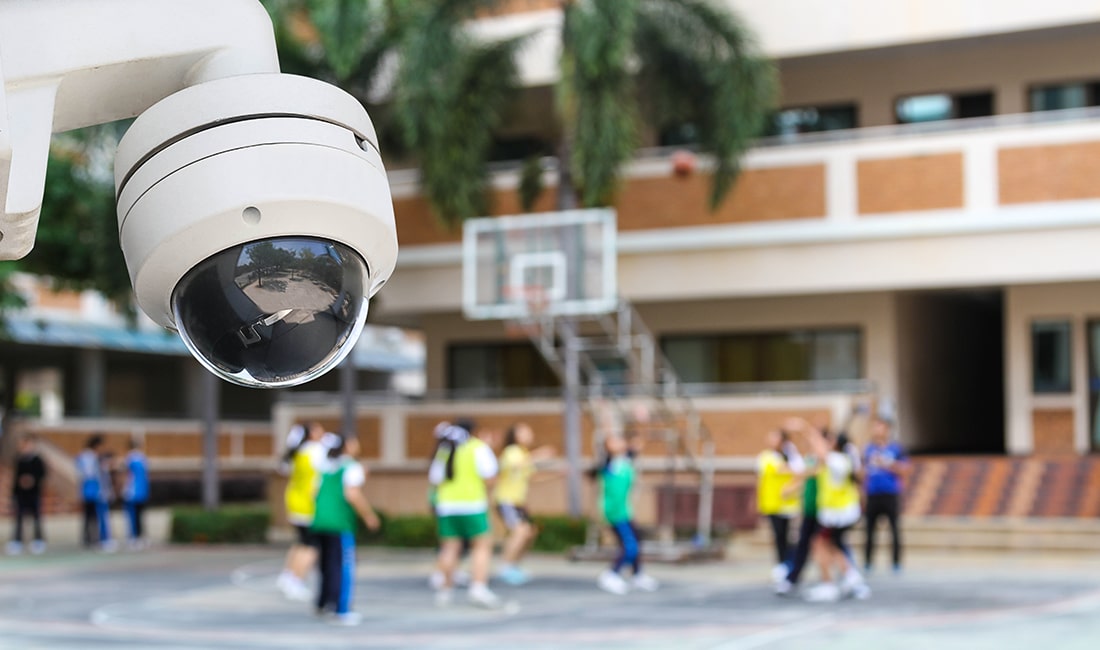Responding to Customer Needs: The Evolution of Surveillance Technology
In the past decade, video surveillance solutions have undergone significant transformations, particularly in recent years with the introduction of advanced features like artificial intelligence (AI) and sophisticated analytics. These innovations are enabling organizations to tackle challenges more swiftly, respond effectively to potential threats, and streamline their daily monitoring operations.
For businesses, government agencies, and school districts looking to upgrade their surveillance systems, understanding these advancements is crucial for strategic and successful implementation. In this blog, we will explore the latest developments in video surveillance, highlighting how they enhance security while also addressing common concerns regarding cost and complexity. Join us as we delve into these exciting innovations and their practical applications.
The History of Surveillance Technology: From Analog to Digital
Surveillance technology has come a long way since the first closed-circuit television (CCTV) systems emerged in the mid-20th century. Originally used in military and industrial settings, early surveillance systems relied on analog video feeds transmitted via coaxial cable to a small number of monitors. These basic systems lacked storage capabilities and required live monitoring to be effective.
As the demand for public and private security grew, so did the role of surveillance cameras. By the 1980s and 1990s, advancements in analog systems allowed for video recording through time-lapse VHS tapes. However, limitations in image quality, scalability, and storage eventually pushed the industry to explore more efficient digital solutions.
This shift paved the way for the next generation of surveillance technology, evolving into digital video recorders (DVRs) and, ultimately, IP-based systems. Today’s surveillance systems can record, store, and analyze vast amounts of video data, offering high-definition quality and remote access capabilities that would have been unimaginable just a few decades ago.
Need-to-Know Advancements in Video Surveillance: AI and Analytics
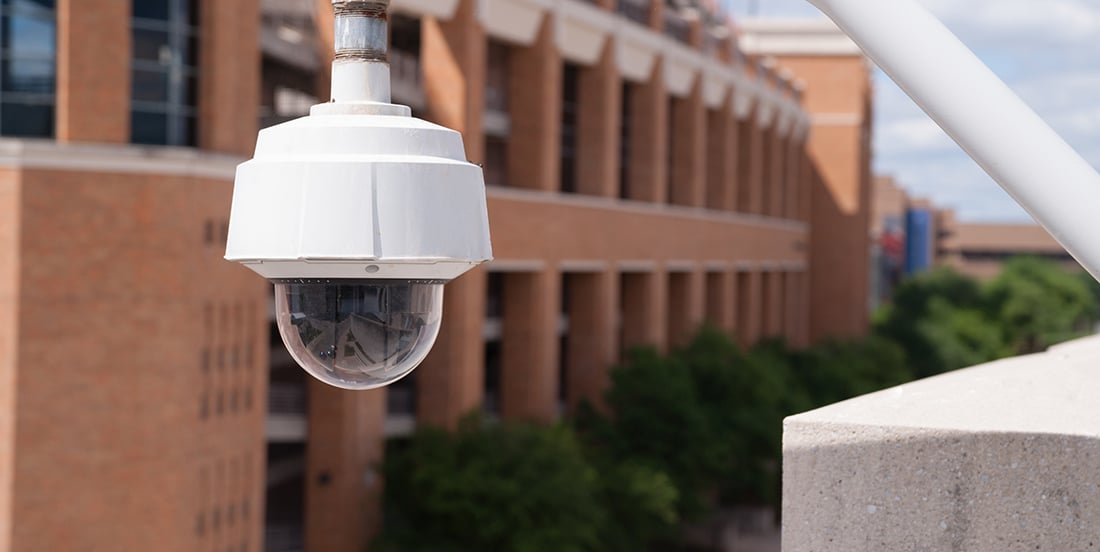
With more information about AI-assisted video surveillance becoming available, many have been curious about exploring the powerful benefits these technologies offer for improving physical security throughout their organizations.
If you’ve thought about leveraging these solutions to make your offices and campuses safer, now is the time.
From AI-powered search to facial recognition to behavior analysis, the latest advancements in AI and analytics are changing the way organizations like yours approach video surveillance.
These features make it easier for teams to follow security policies and create safer buildings and grounds with added security, leading to faster response times.
And with enhanced analytics capabilities, users can interpret data more effectively, leading to better decision making. When you harness these cutting-edge video surveillance solutions, you can ensure you are creating a more effective, efficient, and safer environment for everyone.
However, the hesitation for many budget-conscious buyers has been that these new systems often required you to shift out or replace some of your older technologies in the process. A complete rip-and-replace of older camera equipment can be a deterrent for those who want to improve physical security but have limited access to funds. But the tide is changing.
How AI and Smart Analytics Are Reshaping Surveillance Systems
As AI-powered features become more accessible, they’re transforming what organizations expect from their video surveillance technology. No longer are cameras limited to passively capturing footage—today’s systems offer intelligent insights that actively enhance physical security.
Modern video surveillance systems use AI to identify potential threats through facial recognition, motion tracking, and behavioral analytics. These tools can detect anomalies—such as loitering, unauthorized access, or aggressive behavior—and trigger automated alerts in real time. This proactive approach allows security personnel to act swiftly and prevent incidents before they escalate.
AI-assisted systems also improve operational efficiency. For example, smart search features can filter video footage by clothing color, direction of movement, or facial features, eliminating hours of manual review. These advancements help organizations balance safety with efficiency, turning surveillance from a reactive tool into a strategic asset.
When integrated with cloud platforms, these technologies unlock even more potential—making advanced surveillance accessible across school districts, corporate campuses, and government facilities alike.
The Real-World Challenges of Integrating New Video Surveillance Tech

Your video surveillance systems are a vital piece of your safety ecosystem. When it comes to updating these solutions, you may have faced a myriad of challenges ranging from equipment selection to implementation to maintenance and beyond.
One major obstacle that may arise is the issue of how to approach legacy systems and make sure that your new video surveillance solution works with whatever you add to the mix. This compatibility challenge can be difficult because it often requires some forethought, planning, and strategy to execute properly. And, in most cases, organizations face several integration obstacles along the way.
Another hurdle can arise when it comes to onboarding or training your staff to use new technologies or tools once they’re implemented or installed. Not only can employees and team members be resistant to change, but they may be at different levels of proficiency, requiring different approaches to get them comfortable with effectively using the new solution. Whatever the case, the truth remains the same: Successful implementation requires internal alignment and training.
While these are just two of the challenges you might anticipate when it comes to your new technology, it’s important to strategize about how to approach them. Having a technology partner who can help you plan for and seamlessly execute new systems or enhanced integrations leads to achieving success faster and often reduces costs that go along with the learn-as-you-go approach. Having a plan, after all, can make the entire process run much more smoothly.
Benefits of a Hybrid Video Surveillance System
Many organizations looking to upgrade their surveillance infrastructure face the dilemma of legacy equipment. Fortunately, a hybrid surveillance system—one that combines existing analog infrastructure with modern IP-based solutions—can offer a strategic, budget-conscious path forward.
Hybrid video surveillance systems allow businesses to retain functional legacy cameras while gradually integrating advanced features like remote access, cloud storage, and AI analytics. This phased approach minimizes upfront costs, reduces system downtime, and ensures a smooth transition without disrupting day-to-day operations.
By supporting both analog and digital video feeds, hybrid systems provide flexibility. They enable scalability for future upgrades while maintaining compliance with existing physical security requirements. For organizations concerned with budget constraints or complex physical layouts, this solution strikes a balance between innovation and practicality.
As vendors like Eastern DataComm and Verkada embrace hybrid strategies, customers gain the freedom to enhance their video monitoring systems without compromising on performance or cost efficiency.
Responding to Customer Needs with Innovative Solutions
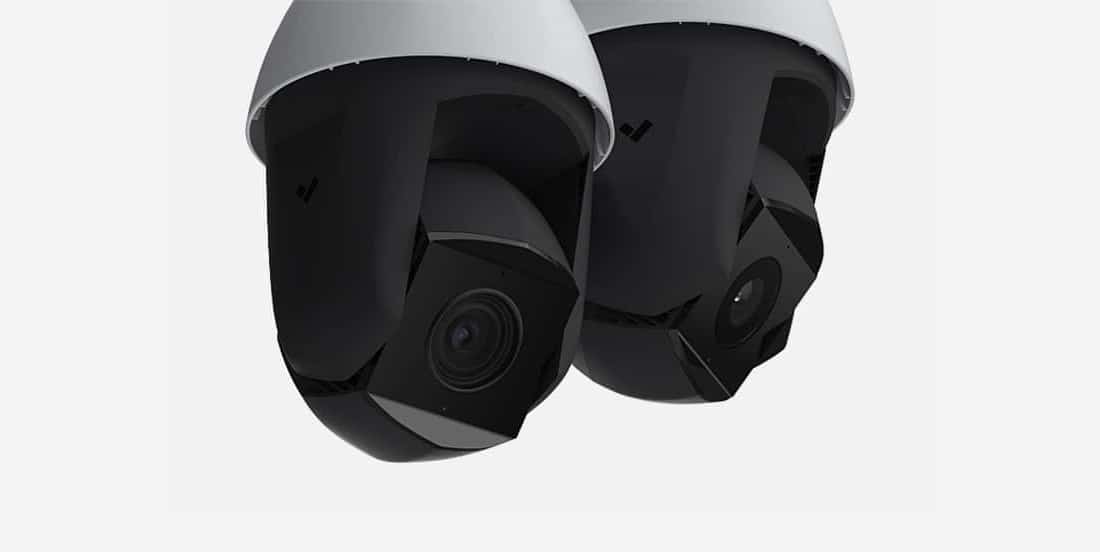
Like Eastern DataComm, organizations like Verkada do their best to understand and respond to what their customers need. Many manufacturers are making strides to create solutions that tackle issues like surging costs and ever-lengthening installation times. These forward-thinking companies monitor feedback and adapt their designs, innovating and upgrading based on that feedback. The results speak for themselves: security systems that are streamlined and more budget-friendly.
By focusing on what customers want, companies like Verkada are joining our Eastern DataComm team in keeping customers more connected and protected than ever before.
Let’s explore an example of how they’re doing just that.
The Challenge
We often hear that our customers want Verkada’s cutting-edge platform, but worry they’d have to rip and replace the entirety of their old business video surveillance systems to make that happen. The prospect of doing so is not only time-consuming, but potentially a non-starter entirely if funding is limited.
And so with that financial burden looming, business decisions are made. Some put off their dream of a state-of-the-art video surveillance system for their organization. Others give up entirely on the solutions they really believe will best keep their communities protected. An unfortunate consequence would be to settle for less costly technologies that address some, but not all of their needs. But neither group needs to do so any longer…
Introducing: Verkada’s Command Connector
The Verkada Command Connector lets organizations quickly and easily connect older cameras to their system. It supports many features like video analysis, remote management, and easy storage. This tool helps make the switch to Verkada’s cloud system smoother, meeting modern security demands without overwhelming costs to you as a customer.
It represents Verkada’s industry-leading ability to adapt to meet its customers’ demands for innovative solutions. And it offers you the chance to reap the benefits of a leading-edge video surveillance system without a total and complete overhaul of your existing system.
The Benefits to Customers
The Command Connector helps our customers address a multitude of integration challenges when it comes to connecting their video surveillance systems with other existing technology solutions.
Using the Verkada Command Connector helps you avoid a complete system overhaul or reduce your rip/replace costs, resulting in significant cost savings for you.
Installing Command Connector also provides increased operational efficiency and added security through streamlined integration with your other systems.
And of course, integrating your systems with a vendor partner like Eastern DataComm means you’ll have the added value of a customized solution that’s tailored to your specific needs and works for your organization, buildings, and budget.
What the Future Holds for Surveillance: Smarter, Safer, More Connected
The future of surveillance is defined by deeper integration, smarter analytics, and the expansion of Internet of Things (IoT) connectivity. As technology advances, video surveillance systems are evolving into fully integrated safety platforms—capable of monitoring, analyzing, and responding to threats autonomously.
Edge computing will play a crucial role, enabling devices to process video data locally in real time, reducing latency and bandwidth usage. Meanwhile, cloud-native surveillance platforms will offer seamless updates, expansive storage, and enhanced accessibility for remote teams.
The integration of surveillance with smart building systems will also increase. Imagine cameras that not only monitor activity but adjust lighting, trigger lockdown protocols, or interface with HVAC systems based on real-time data.
Artificial intelligence will continue refining these capabilities, introducing predictive analytics that anticipate suspicious behavior before it occurs. While this innovation enhances safety, it also calls for thoughtful policies around data privacy and ethical surveillance use.
The next wave of surveillance technology promises not just improved security, but a more intelligent, adaptive, and efficient ecosystem for organizations of all sizes.
Creating Better Video Surveillance Results Begins with a Diagnostic and Consultative Approach

In today’s fast-paced technology environment, it’s essential to embrace the latest technological advancements while addressing how you can best integrate them with what you already have at your disposal. And while this is the best possible way to move forward, it can lead to challenges if you’re relying on a different vendor to represent each of the technology solutions that make up the entirety of your organization’s safety ecosystem.
At Eastern DataComm, we believe the best course of action is one where your technology partner helps you through a process of diagnosis, consultations, planning, and strategy. Working with you as a consultant to ensure you have the best-fitting solutions possible, our team assists you with implementing your chosen solutions and integrating them seamlessly. The benefit? You’ve now saved time and ensured your peace of mind throughout the entire process by trusting professionals who have delivered superlative results for over 35 years.
This diagnostic and consultative process leads to improved outcomes because it keeps the end goal in mind from the outset. Our focus bears in mind your operatives, budget, existing technology, strengths, and areas for improvement. And that’s not a process you’ll navigate with just any vendor.You deserve a partner who:
- Is with you for the long-haul.
- Provides expertise in customizing solution integration.
- Delivers solutions that are tailored to your unique needs.
And that’s exactly what you’ll get when you work with our Eastern DataComm team.
We’ll Put Cutting-Edge Innovation to Work for You
At Eastern DataComm, we understand that choosing the right video surveillance system is more than a tech decision—it’s a critical investment in your organization’s safety and operational success. With over 35 years of experience and a consultative approach, we specialize in creating customized, budget-conscious solutions for schools, businesses, and municipalities alike.
Whether you’re modernizing your current surveillance infrastructure, integrating AI-powered analytics, or exploring hybrid systems, our team is here to help you select and implement the best-fit video security system for your needs.
Curious about how these advancements can serve your organization? Check out our Video Surveillance Solutions, or Contact Us and we’ll help you make the decisions that are right for your needs and budget.



